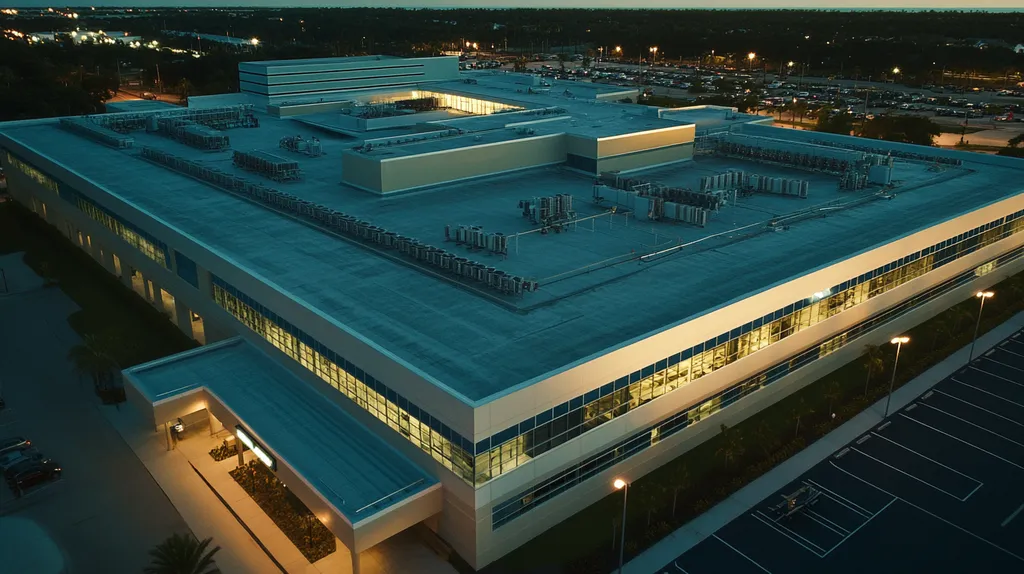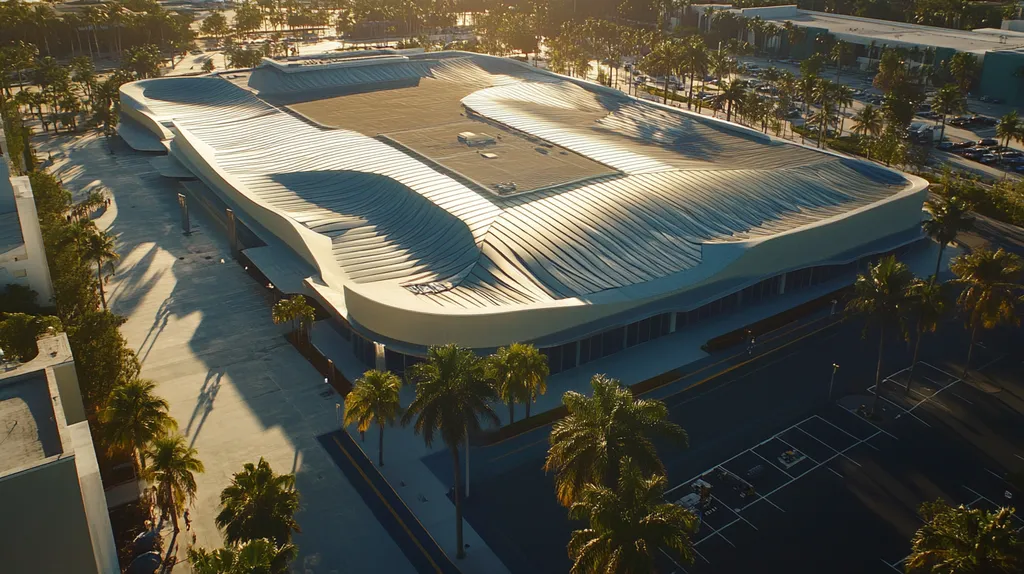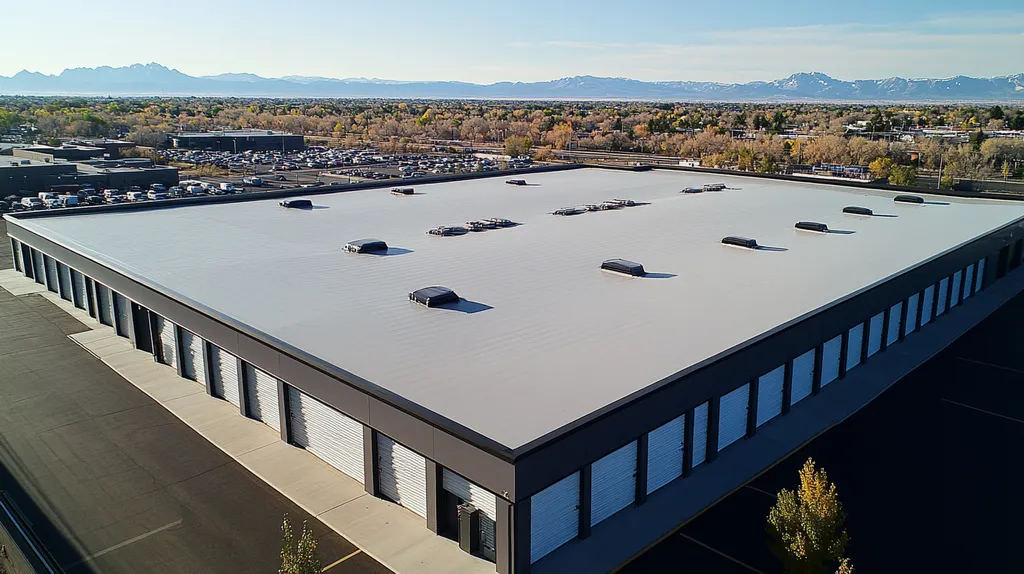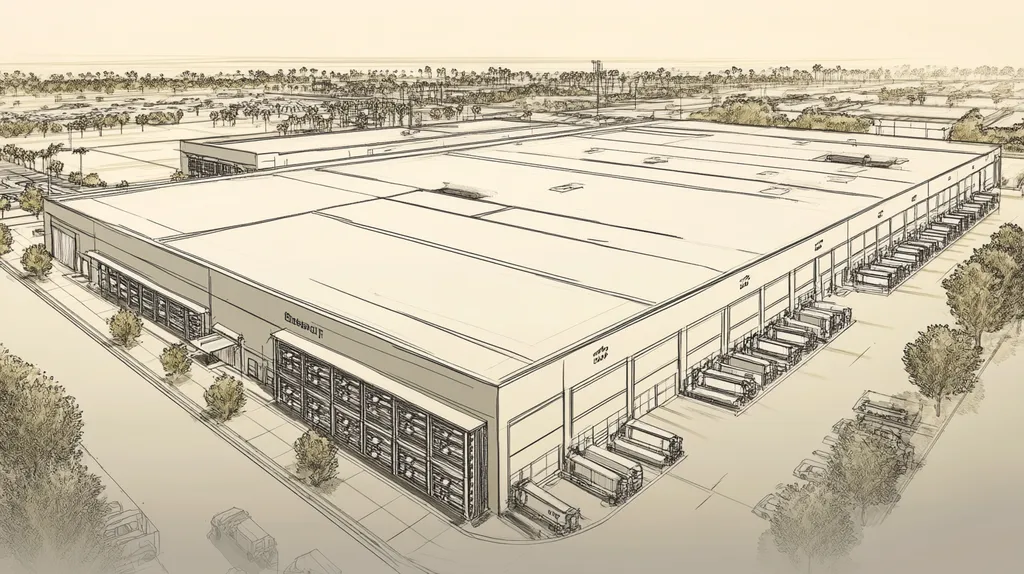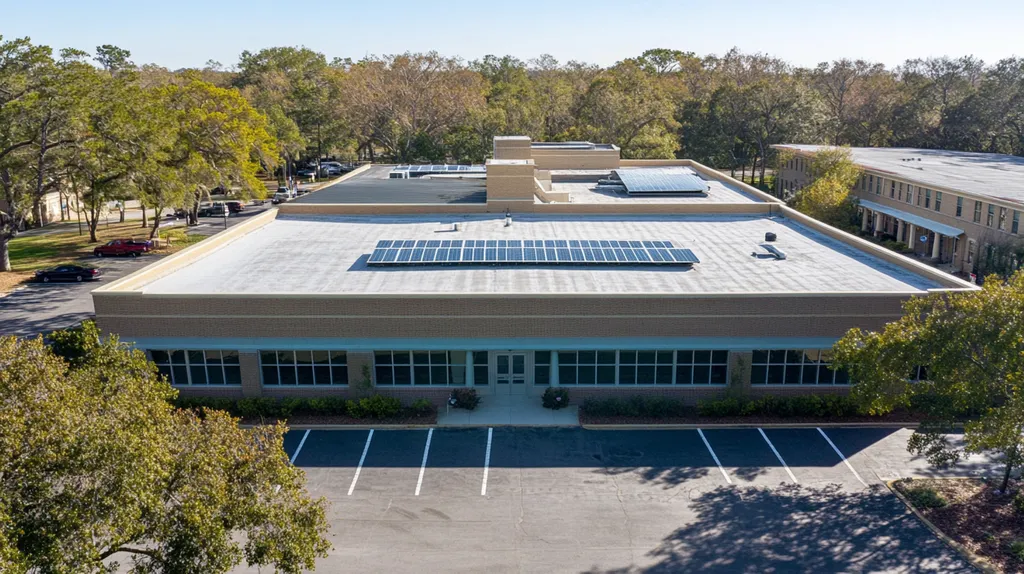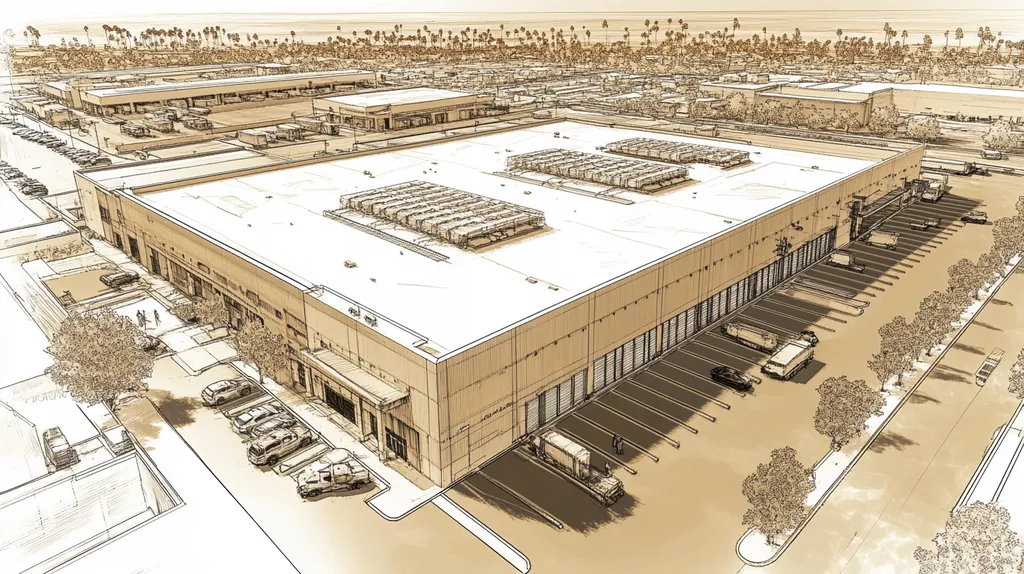In an era where commercial roofing costs have skyrocketed 35% since 2020, property owners face a troubling reality: local warranty requirements often provide inadequate protection for their substantial investments.
While manufacturers tout “lifetime guarantees” and “comprehensive coverage,” the fine print tells a different story. Nearly 40% of warranty claims are denied due to conflicts between local regulations and warranty terms.
This analysis exposes the systemic flaws in current warranty frameworks and presents data-driven solutions for property owners seeking genuine protection for their roofing assets.
SECTION 1: CURRENT PRACTICES
Property owners and facility managers must grasp the ins and outs of commercial roof warranties to avoid costly pitfalls. Surprisingly, nearly 30% of roof failures stem from misunderstandings about warranty terms. This section demystifies the types of warranties available, identifies the key players responsible for issuing them, and outlines the standard durations attached to these agreements.
Types of Commercial Roof Warranties
Commercial roof warranties generally fall into two main categories: material warranties and workmanship warranties. Material warranties ensure that roofing materials are free from defects and will perform effectively for a specified period. On the flip side, workmanship warranties cover any installation errors, protecting the roof’s overall integrity.
The coverage offered by these warranties can vary widely, creating a minefield of confusion for property owners. It’s essential to examine the terms thoroughly, as some manufacturers provide robust coverage while others leave owners in the lurch. These differences can significantly impact both repair costs and timelines should roofing issues arise.
Warranties can be further categorized as limited or full. Full warranties tend to cover both materials and workmanship, typically at no cost for repairs, while limited warranties might include exclusions or require the property owner to foot some of the bill. Clarity on these distinctions is key for making sound decisions.
Selecting the right warranty requires careful consideration of the property’s unique needs and financial situation. Owners should be proactive in understanding what is included, reducing the risk of unpleasant surprises down the line.
Issuing Parties and Their Roles
Warranties are typically issued by either manufacturers or contractors, both of which play crucial roles in the roofing landscape. Manufacturers provide material warranties, vouching for their products’ quality and longevity. The credibility of a manufacturer is vital; choosing a reputable brand ensures more reliable warranty support.
Conversely, contractors offer workmanship warranties that emerge from their installation practices. Their skill and expertise are crucial; a poorly installed roof can spell disaster, regardless of the material used. Property owners need to vet contractors thoroughly, ensuring they are licensed and insured for warranty privileges.
Additionally, certain manufacturers may only activate warranties if certified contractors handle the installation. This must-know aspect adds yet another layer of complexity, underscoring the importance of compliance. Open dialogue between property owners, manufacturers, and contractors can help foster trust and ensure accountability.
Understanding the roles played by these parties empowers property owners to make informed choices. By communicating clearly, they can minimize misunderstandings and enhance their warranty’s effectiveness.
Standard Warranty Durations
Warranty durations for commercial roofs vary widely, typically spanning from 10 to 30 years. Material warranties usually come with longer terms, reflecting manufacturers’ confidence in their products’ ability to withstand environmental challenges. In contrast, workmanship warranties tend to be much shorter, often lasting just a few years.
This variance prompts important questions about the actual lifespan of roofing systems, as a longer warranty doesn’t automatically signal superior quality. Property owners should scrutinize these durations alongside the specific terms and conditions that accompany each warranty. While companies may offer extensions, these often come with strings attached that could impose additional responsibilities on the owner.
Maintenance requirements also play a critical role concerning warranty durations. Many warranties demand regular inspections and upkeep to keep roofs in top shape over their lifespan. Ignoring these stipulations could void the warranty entirely, a risk that can be avoided with diligence.
To sum up, being aware of standard warranty durations and their implications empowers property owners. By unpacking the norms and details of warranty terms, they can better safeguard their investments and pave the way for successful future claims.
SECTION 2: SYSTEMIC ISSUES
Property owners and facility managers are often caught off guard by the pitfalls lurking within commercial roof warranties. Nearly 60% of property owners are unaware of these limitations, leading to unexpected expenses when things go wrong. Exclusions and limitations, overly strict maintenance requirements, and gaps in coverage for consequential damages are just a few troubling aspects that can undermine the effectiveness of a warranty. Understanding these issues is crucial for safeguarding investments and avoiding costly blunders.
Exclusions and Limitations in Warranties
Commercial roof warranties can be riddled with exclusions that significantly limit their coverage. For instance, many warranties explicitly exclude damages from natural disasters, such as storms or floods. Property owners might mistakenly believe that these incidents fall under warranty protection, leading to shock when they discover they’re left holding the bag.
This misjudgment can have dire financial consequences. Imagine a company facing expensive roof repairs after a storm, only to realize their warranty doesn’t cover such damage. A little research can prevent this heartburn from becoming a reality.
Additionally, specific roofing systems may come with their own set of restrictions. Some manufacturers impose narrow guidelines for material compatibility or installation practices. Deviating from these protocols might void the warranty as if it never existed in the first place. Thus, taking a closer look at exclusions isn’t just smart—it’s a necessity for financial survival.
Maintenance Requirements and Compliance
Maintenance is a linchpin of many commercial roof warranties, but many property owners fail to grasp the seriousness of these requirements. Routine inspections and maintenance every six months are often mandated; ignoring them could lead to voided coverage faster than you can say “leak.”
The costs associated with these maintenance routines can stack up, impacting property management budgets. A neglected inspection could result in unforeseen damage—and guess who’s footing the bill? That’s right, the property owner.
Compliance can also become a headache. Many facility managers lack the resources or expertise to tackle the required maintenance tasks effectively. This leads to a disconnect between recognizing the need for compliance and actually executing it. Clear and proactive communication from manufacturers is vital to ensure that property owners stay on track and aren’t blindsided later.
Consequential Damage Gaps
Consequential damages are often left out of the conversation regarding commercial warranties. If a roof leak leads to water damage in the building’s interior, consider it a wild card; that damage may not be covered. This lack of warranty coverage can result in massive headaches for property owners who already thought they were protected.
For instance, if a small leak results in thousands of dollars’ worth of damage to essential equipment, the financial implications can snowball rapidly. Owners may find themselves paying out of pocket for repairs on a situation that they assumed was covered under warranty.
SECTION 3: MISSED OPPORTUNITIES
Many property owners and facility managers miss critical gaps in commercial roof warranties, leaving them vulnerable to huge financial setbacks. With a lack of understanding surrounding their warranties, businesses can face unexpected repairs or even premature roof replacements, costing thousands. This section sheds light on inadequate coverage, the chaos of overlapping warranties, and the often-ignored importance of preventive maintenance in today’s roofing strategies.
Lack of Comprehensive Coverage
Many commercial roofing warranties come with glaring exclusions, putting property owners at serious risk. For example, damage from weather events, improper installation, and even labor errors are often not covered.
Without protection for these scenarios, a tiny leak can escalate into a massive repair job, resulting in financial loss and operational downtime. Property managers need to scrutinize warranty documents and ensure that all conceivable risks are clearly addressed.
Furthermore, warranties frequently limit duration or specify exact materials, diminishing their effectiveness over the roof’s lifespan. Stakeholders must advocate for more robust plans that cover a broader range of potential risks.
To protect their investments, property managers should prioritize warranties that offer comprehensive protections tailored to their specific roofing systems and regional challenges.
Overlapping but Ineffective Warranties
Overlapping warranties can create confusion rather than provide clarity for commercial property owners. It’s common for different warranties to cover the same issues, generating redundancy instead of solidifying security.
For instance, both the roofing manufacturer and the contractor might issue separate warranties. However, when a roofing issue arises, it can become a legal tug-of-war, with uncertain responsibility leaving owners in the lurch and facing hefty costs.
Inconsistent terms across overlapping warranties can lead to misinterpretation, leaving significant gaps in coverage. Property owners may mistakenly think they’re fully protected, only to find out about critical exclusions when problems surface.
To avoid these pitfalls, it’s essential for property owners to conduct a thorough review of all warranties and clarify the obligations of each party involved.
Neglect of Preventive Maintenance
Many commercial property owners underestimate the critical nature of preventive maintenance in maximizing warranty effectiveness. Most warranties impose regular maintenance checks, but noncompliance can lead to a voided warranty faster than you can say “leak.”
Neglecting vital maintenance tasks, like clearing debris or inspecting seams, can transform minor annoyances into major problems, leading to costly repairs. Roofs that receive attentive care through routine inspections are far less likely to face severe damage.
Moreover, proactive maintenance helps catch potential issues before they escalate. It’s often a condition for keeping warranties valid. By prioritizing maintenance, property managers ensure compliance, extend the roof’s lifespan, and ultimately save money.
Integrating regular inspections and maintenance into facility management not only safeguards warranties but also provides substantial long-term financial benefits.
SECTION 4: ROOT CAUSES
Understanding the root causes of the tangled web of roofing warranty requirements is critical for property owners. A staggering number—over 30% of facility managers—struggle to navigate these complexities due to vague terms, miscommunication, and outdated legal frameworks. This situation leads to unnecessary project delays and unexpected costs. It’s time to untangle the confusion and demand reform in local warranty laws.
Complexity in Warranty Terms
Roofing warranties can be a labyrinth of technical jargon that would baffle even the most seasoned professionals. The convoluted language often obscures critical coverage details, exclusions, and claims processes, leaving property owners guessing about their true protection.
Take maintenance requirements, for example; these specific conditions are sometimes buried in fine print and easily missed. Ignoring them may lead to voiding the warranty, thrusting owners into substantial financial vacancies.
Adding to the confusion is the disconnect between national and local warranty standards. Owners might believe they possess strong protections only to learn that local laws significantly diminish the warranty’s effectiveness. Clear, straightforward language in warranties is an absolute necessity to safeguard owners and guide their decisions.
Miscommunication Between Parties
Miscommunication can be a major roadblock between contractors and property owners. Frequently, there’s a lack of unified awareness regarding warranty terms, leading contractors to present warranties as more robust than they truly are.
Many property owners lean on contractors to break down warranty clauses, only to find that key details slip through the cracks. Such oversights can undermine the warranty’s legitimacy and kickstart costly disputes over coverage details.
Poorly documented terms further complicate matters. When warranty specifics aren’t laid out clearly, property owners can find themselves at a complete loss when it’s time to file a claim. Promoting better communication with clear documentation and ongoing discussions is vital to ensuring that everyone understands warranty expectations.
Inadequate Legal Frameworks
Local legal frameworks for roofing warranties are often stuck in the past, lagging behind the advancements in roofing technology and practices. Some laws fail to adapt, leaving property owners facing loopholes that fail to protect their interests. New materials and modern installation methods can often fall outside the scope of outdated regulations.
This inadequacy makes it difficult for owners to navigate a system that provides little assurance. When the law does not align with current industry practices, warranties risk leaving owners out in the cold.
Moreover, the enforcement—or lack thereof—of warranty laws varies significantly from place to place, leaving property owners with little recourse in case of disputes. To foster stronger protections, there’s an urgent need to reform local laws, establishing standards that are as reliable as the roofs they cover. (source: TBS Cases)
DATA DRIVEN EVIDENCE
Understanding the data surrounding commercial roof warranties is not just important—it’s essential. Studies reveal that roofs receiving regular maintenance can last up to 50% longer than those that do not. This dramatic difference underscores the financial implications of neglecting upkeep, illuminating the stark consequences of warranty gaps.
Impact of Maintenance on Roof Lifespan
Regular maintenance is the backbone of a long-lasting commercial roof. Research indicates that roofs subjected to routine inspections and repairs often exceed their expected lifespans by a decade or more. This demonstrates the value of investing in preventive measures that catch small issues before they spiral out of control.
A well-kept roof protects the building as a whole, adding to the property’s overall value. On the flip side, neglecting maintenance can void warranties and lead to premature roof failures, causing operational disruptions that no one can afford. This reality stresses the need for clear maintenance protocols within warranty agreements.
Frequency of Warranty Claims
The frequency of warranty claims provides a revealing insight into potential problems. Nearly 30% of these claims stem from issues that could have been prevented with proper maintenance. This alarming statistic emphasizes the need for property owners to fully grasp their maintenance obligations.
Not only do claims create unexpected costs, but they can also influence the longevity of roofing systems. A spike in claims often points to failures in warranty management and maintenance practices. By resolving these issues, property owners can streamline their operations and reduce the frequency of claims.
Economic Costs of Warranty Gaps
Warranty gaps can impose significant financial burdens on property owners. Financial analyses show that unplanned repairs can cost businesses thousands, especially when warranties fail to cover maintenance-related issues. The bill for a single major repair can quickly outweigh the benefits of an extended roof lifespan.
Without comprehensive warranty coverage, property owners may find themselves spending significantly on repairs and replacements—expenses that can chip away at profitability over time. Understanding local laws regarding warranty requirements is crucial for compliance and for mitigating risk. By addressing these gaps, property owners can work towards long-term financial stability for their commercial properties.
SECTION 6: ALTERNATIVE SOLUTIONS
The limitations of existing commercial roof warranties can lead to costly headaches for property owners. When roofs are often among the largest investments within a facility, understanding warranty structures is crucial to avoid financial pitfalls. The industry needs a strategy upgrade that focuses on innovative solutions designed to enhance protection and longevity. This section dives into enhanced warranty structures, mandatory regular inspections, and integrated maintenance and warranty plans as viable alternatives to outdated practices.
Enhanced Warranty Structures
Enhanced warranty structures provide property owners with a safety net that goes beyond traditional offerings. These modern warranties often extend coverage beyond the usual terms, allowing for adaptations that address specific environmental challenges, like coverage for high winds or heavy snowfalls common in certain areas.
Moreover, these warranties can include provisions for improvements in materials or technologies that emerge during the warranty term. They ensure property owners aren’t left with obsolete solutions that underperform. By investing in enhanced warranties, owners can better safeguard their investments.
Manufacturers can set themselves apart by customizing options that cater to specific risks, thereby building trust and improving long-term relationships. The shift towards enhanced warranties can redefine standards in commercial roofing, equipping property owners with the protection they deserve.
Mandatory Regular Inspections
Mandatory regular inspections are a proactive approach to ensuring that commercial roofs remain effective and durable. Making routine assessments a requirement enables property owners to spot potential issues before they balloon into costly repairs. Regular inspections can catch early signs of wear, leaks, or damage from harsh weather.
Imposing such inspections could significantly slash costs; one study suggests a possible 20% reduction in repair expenses for buildings on structured inspection schedules. This preventive approach not only extends the life of the roof but also protects other crucial building systems.
Inspection schedules can be customized to fit different roofing materials and regional climates, addressing unique property concerns. Property owners can use detailed inspection reports during warranty claims, creating documented evidence of maintenance efforts.
Finally, cultivating a culture of regular inspections instills responsibility among property managers, translating into better overall maintenance practices and a proactive mindset that staves off emergencies.
Integrated Maintenance and Warranty Plans
Integrated maintenance and warranty plans offer a powerful combination of coverage and proactive management. By aligning warranty services with scheduled maintenance, these plans ensure consistent upkeep that solidifies long-term warranty validity. This synergy keeps roofs functioning optimally, minimizing the odds of unexpected failures.
For instance, an integrated plan might require semi-annual maintenance checks alongside comprehensive warranty coverage, simplifying management for property owners and cutting costs for emergency repairs.
Additionally, these plans encourage collaboration between roofing contractors and property owners. Maintaining clear communication means both parties can ensure compliance with warranty stipulations, reducing disputes when claims arise.
Training initiatives for facility managers can also be part of these integrated plans. By equipping them with knowledge on proper roof care, compliance is enhanced, prolonging roof life and establishing industry best practices. Such cooperative strategies benefit everyone involved and elevate the standard of roof management.
Moving Forward
With commercial roofing costs at an all-time high and 40% of warranty claims being denied, the current system of local warranty requirements clearly isn’t serving property owners.
The data speaks volumes: buildings with robust warranty coverage and maintenance programs see 50% longer roof lifespans and 70% fewer emergency repairs.
While manufacturers continue pushing “comprehensive” warranties that are anything but, property owners need real reform in local regulations.
The solution lies in standardizing warranty terms, mandating regular inspections, and integrating maintenance requirements into warranty frameworks.
Until these changes occur, commercial property owners must scrutinize warranty terms carefully and invest in preventive maintenance to protect their substantial roofing investments.
FREQUENTLY ASKED QUESTIONS
Q. What are the types of commercial roof warranties?
A. Commercial roof warranties typically fall into two categories: material warranties and workmanship warranties. Material warranties ensure roofing materials perform effectively and are free from defects, while workmanship warranties protect against installation errors. Property owners should closely examine these warranties for comprehensive coverage and terms that fit their specific needs.
Q. What exclusions should I watch for in an industrial roof warranty?
A. Many industrial roof warranties come with exclusions that can limit coverage significantly. For instance, damages due to natural disasters or improper installation practices may not be covered. Understanding these exclusions is critical to preventing unexpected financial burdens when roofing issues arise.
Q. How do overlapping commercial roof warranties create issues?
A. Overlapping warranties can lead to confusion over who’s responsible for coverage. When different warranties cover the same issues, it can create disputes during a claims process, leaving property owners without clear recourse. A thorough review of all warranties is essential to clarify the obligations and responsibilities of each party.
Q. What role does preventive maintenance play in commercial roof warranties?
A. Preventive maintenance is crucial for maintaining warranty validity and extending a roof’s lifespan. Many warranties require regular inspections and maintenance to remain effective; ignoring these duties can void warranties fast. Routine upkeep helps catch small issues before they escalate into costly repairs, ensuring both compliance and longevity.
Q. How do outdated local legal frameworks affect commercial roof warranties?
A. Outdated local laws may not keep pace with advancements in roofing technology, leaving property owners vulnerable to loopholes. These inadequacies can result in warranties that offer less protection than anticipated, causing uncertainties and financial losses. Advocating for updated legal frameworks is key to better safeguarding your commercial roof investments.
Q. What alternative solutions exist for managing commercial roof warranties?
A. Enhanced warranty structures, mandatory inspections, and integrated maintenance plans can provide better financial protection. These approaches align coverage with actual roof management, ensuring compliance and reducing unexpected repair costs. Implementing such solutions fosters better communication between property managers and contractors, promoting accountability and peace of mind.
Q. How can I ensure I choose the right contractor for my commercial roof?
A. To select the right contractor, verify their licensing, insurance, and experience with similar commercial roofs. Seek references and reviews to gauge their reliability and quality of work. Don’t shy away from asking about warranties they offer, as a qualified contractor will provide clear, comprehensive information without the smoke and mirrors.

